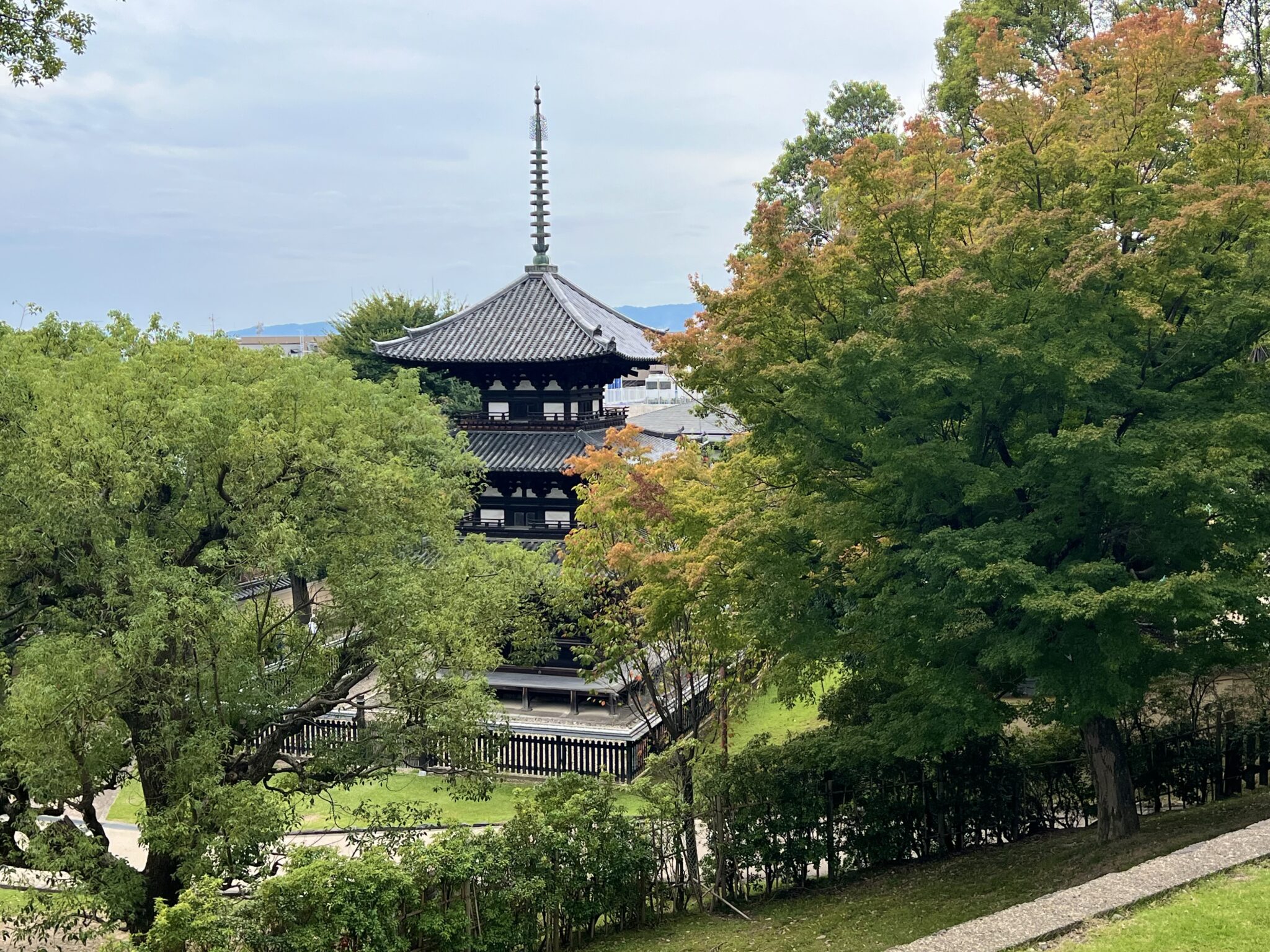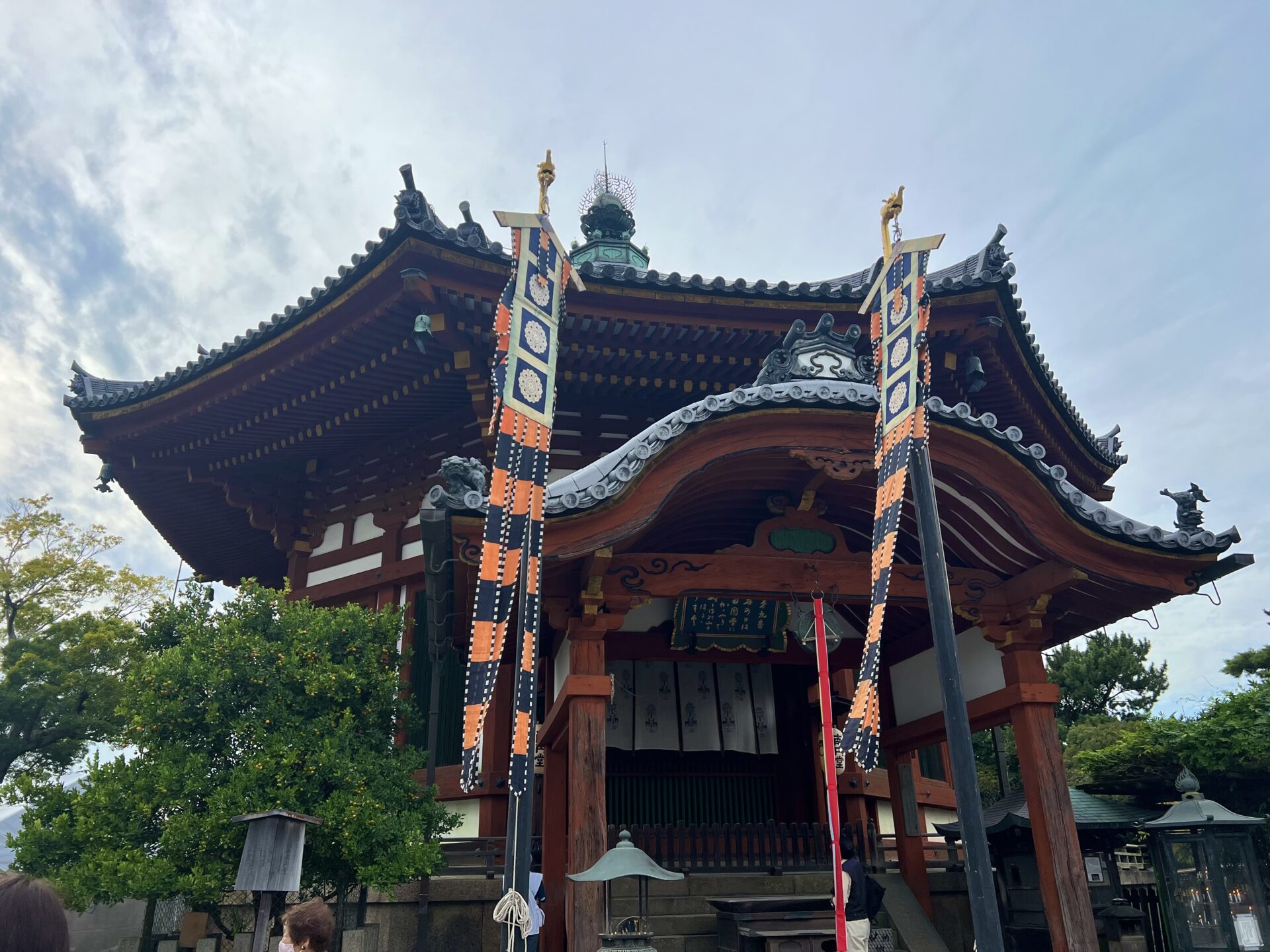October 17th marks the only day of the year when the South Octagonal Hall (Nan’en-do) of Kofuku-ji Temple is specially opened to the public.
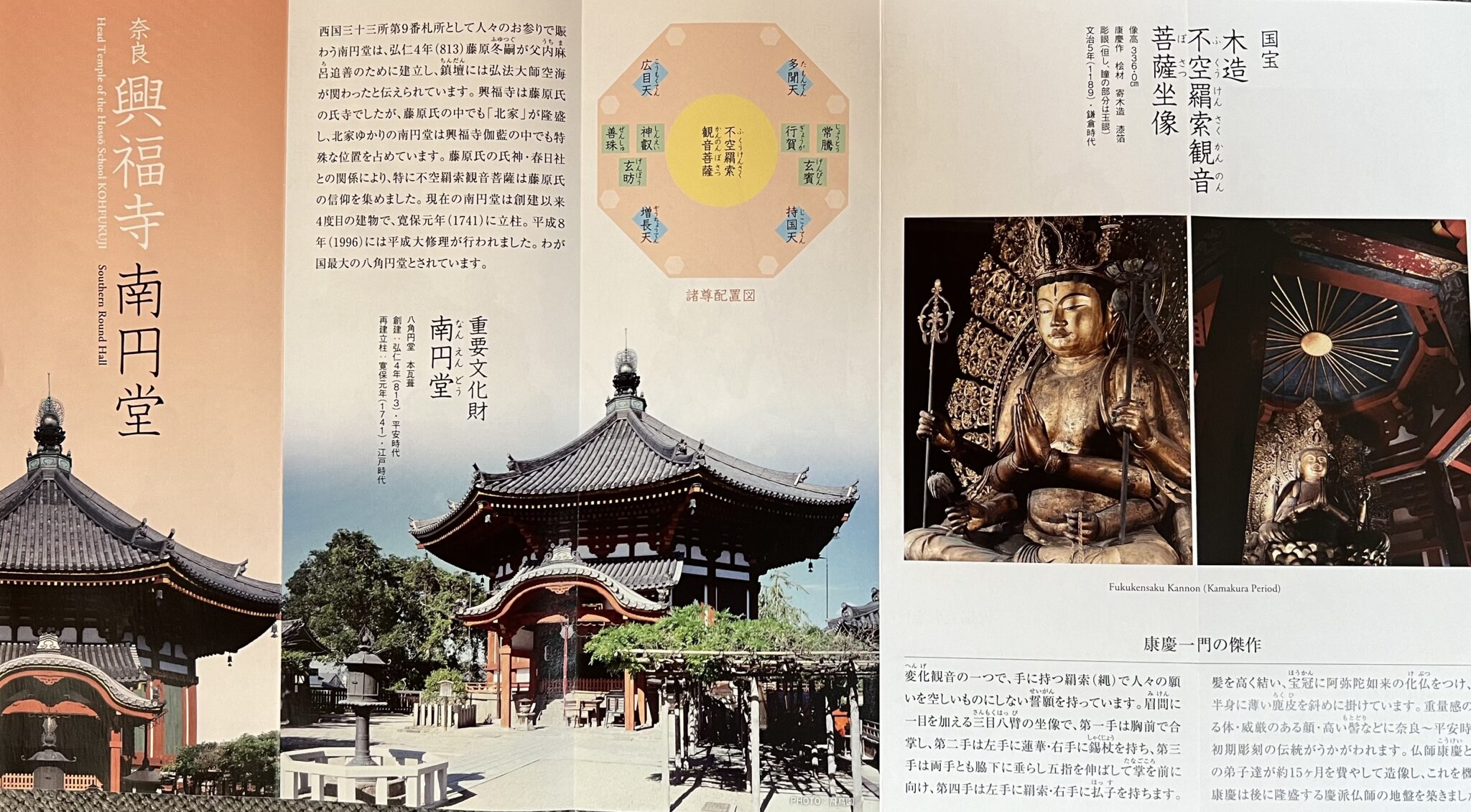
Visitors have the rare opportunity to step inside the hall, which is normally closed, and walk clockwise around the building. After completing the walk, you remove your shoes and enter through the north entrance. The octagonal hall faces east, and the main deity inside, the Fukukenjaku Kannon, is also facing east. This means that entering from the north places you on the left side of the Kannon. In ancient times, high-ranking people would sit facing south with their backs to the north, and thus, many Buddha statues face south. However, in this case, the Kannon faces east.
It is said that the basic layout of a temple with an ancient design follows that of Horyu-ji Temple. Temples like Horyu-ji and Toshodai-ji typically place three deities (such as Yakushi Nyorai, Shaka Nyorai, and Amida Nyorai) in a single hall, aligned from east to west. However, at Kofuku-ji, each Buddha is enshrined in its own hall: Yakushi Nyorai in the East Golden Hall, Shaka Nyorai in the Central Golden Hall, and Kannon in the South Octagonal Hall to the west. The east represents the past, the center represents the present, and the west represents the future. I found it fascinating to view the temple’s layout and the placement of the statues in this symbolic way.
The South Octagonal Hall of Kofuku-ji is also the 9th station of the Saigoku Kannon Pilgrimage, and Kannon is often depicted as a bodhisattva who accompanies Amida Nyorai. This may explain why the Kannon is placed in the western part of the temple.
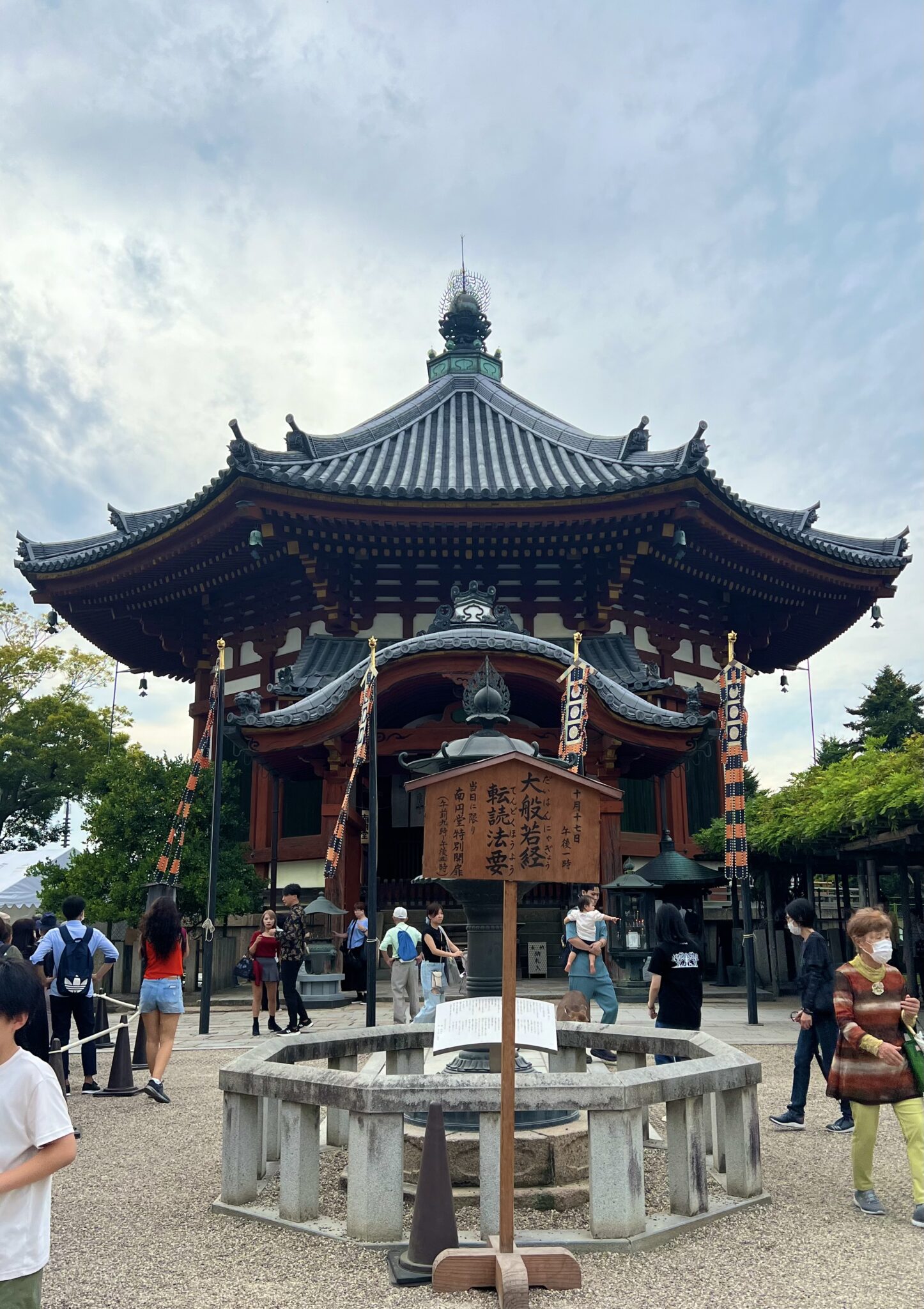
南円堂は813年、藤原冬嗣が父である藤原内麻呂追善のために建立した。北円堂が元正・元明天皇が藤原不比等追善のために建てられたことに倣ったのかもしれない。
Fukukenjaku Kannon National Treasure (13th century)
This magnificent Fukukenjaku Kannon has a very full and compassionate appearance, sitting with a benevolent expression. I was deeply impressed by how everyone viewing the statue was clasping their hands in prayer. Perhaps because it is rarely open to the public, the gold leaf is beautifully preserved, giving it a divine presence. Here, the Kannon is not treated as just an art object, but is revered as an object of prayer. Additionally, a distinctive feature of this Kannon is that it is draped in deerskin over its shoulder.
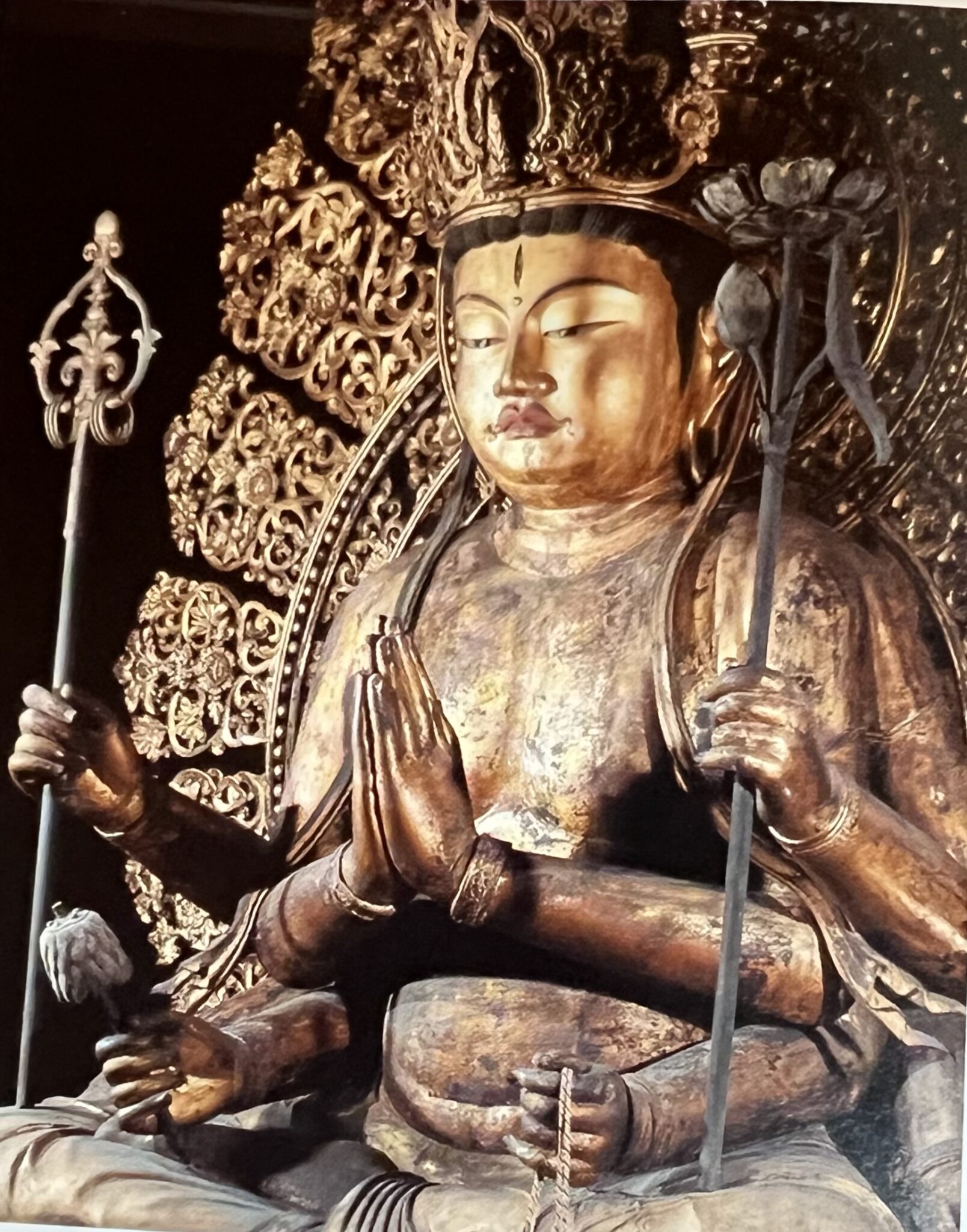
Inside the same hall, the National Treasure statues of the Four Heavenly Kings stand, guarding the Kannon from all four directions. On either side of the Kannon are the seated statues of the Six Patriarchs of the Hosso School, also designated as National Treasures, creating a powerful and awe-inspiring space.
The statues of the Four Heavenly Kings currently in the Southern Round Hall (Nan’en-do) were originally located in the temporary lecture hall and were moved to their current location. These statues were created by the school of Unkei’s father, Kokei, and are designated as national treasures. After a long period of time, it seems that they have finally been reunited as a set with the seated statue of Fukūkenjaku Kannon, also created by Kokei.
The statues of the Four Heavenly Kings that were previously in the Southern Round Hall were moved to the new Central Golden Hall (Chu-kondo) in 2017, to coincide with its completion. These were created by Unkei’s school (a National Treasure) and are thought to have originally been in the Northern Round Hall (Hokuen-do). The reasoning behind this includes the fact that the same katsura wood was used for the statues of Muchaku and Seshin in the Northern Round Hall, and they match the depiction of the Four Heavenly Kings in the ‘Kofuku-ji Mandala’ housed at the Kyoto National Museum. Currently, the Northern Round Hall houses statues of the Four Heavenly Kings from the early Heian period, so Unkei’s Four Heavenly Kings statues were relocated to the new Central Golden Hall.
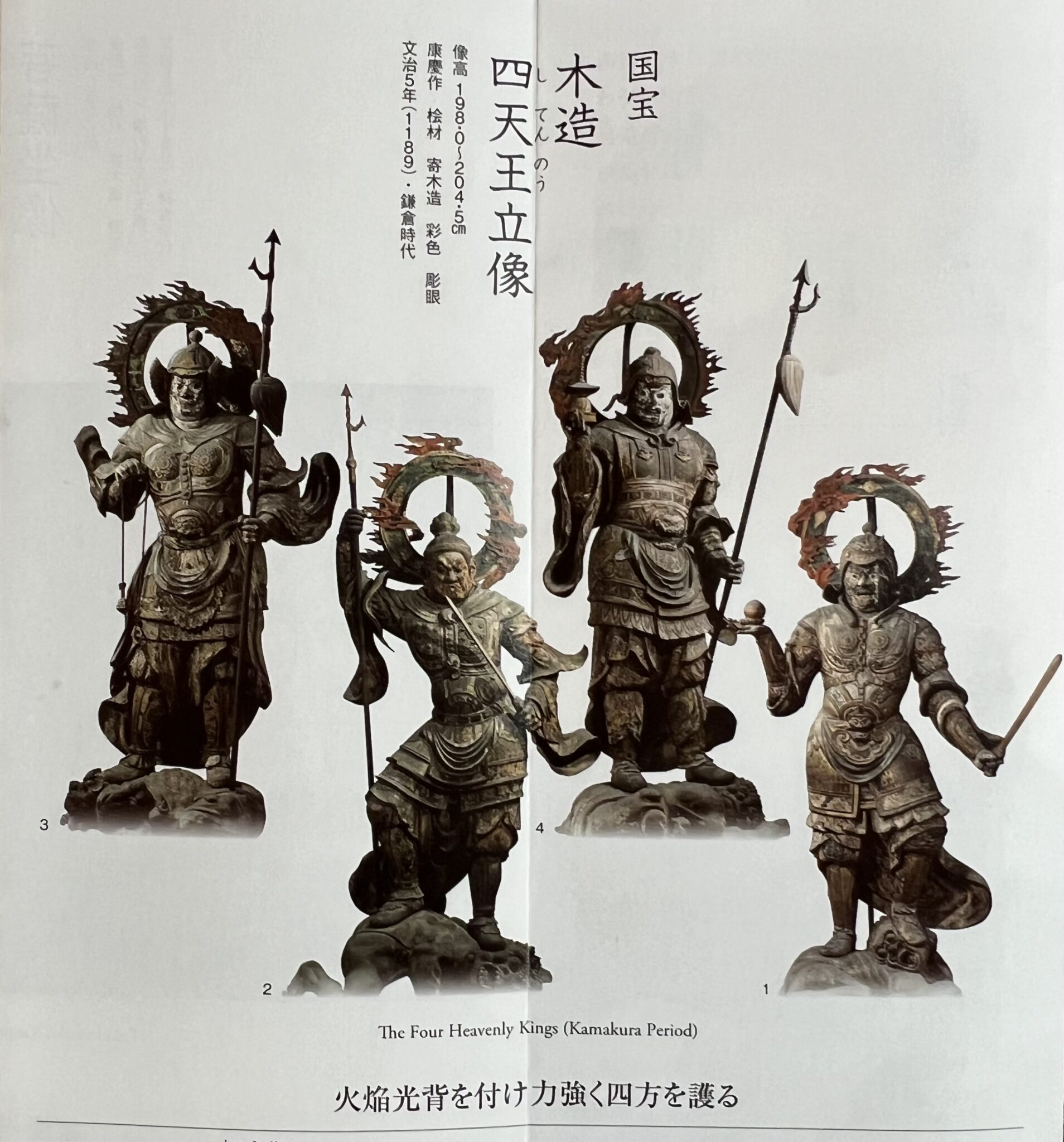
The next time the hall will be opened is October 17th of next year.
The trees around the three-storied pagoda on the temple grounds have just started to show a hint of autumn colors.
